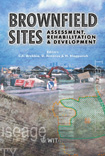Eco-industrial Redevelopment Of LA Brownfields
Price
Free (open access)
Transaction
Volume
55
Pages
Published
2002
Size
816 kb
Paper DOI
10.2495/BF020121
Copyright
WIT Press
Author(s)
C. S. Armstrong & C. E. Tranby
Abstract
This paper focuses on the use of Geographic Information Systems (GIS) within the City of Los Angles (LA) municipal government in the context of eco- industrial redevelopment of brownfield sites. LA, like many cities around the world, has implemented a Brownfields Program to address the problem of urban blight arising from environmental impairment. The program has now expanded to consider eco-industrial concepts. The increasing and dual interests of quality job generation through industrial development and community-focused environmental protection have initiated investigative efforts on eco-industrial redevelopment by the City’s Brownfields Team. Although the definition and understanding of eco- industrial development varies, the City’s efforts revolve around a broadly interpreted encouragement of networks among businesses to achieve maximum economic and environmental performance. This may include waste exchange, sustainable design, pollution prevention, service sharing, and life cycle analysis. The \“Industrial Symbiosis” park in Kalundborg, Denmark, while exemplary, does not provide a model directly relevant to LA, with its different mix of industries and scarcity of undeveloped large tracts of land. Instead, the Brownfields Program may adapt the traditional model to its dense urban fabric by facilitating waste and materials exchanges among existing businesses and using redeveloping brownfields to fill-in the gaps in potential eco-industrial relationships. This approach extends the eco-industrial concept to redevelopment by involving brownfields themselves as an integral component of the reclamation, recycling and reuse process-a scenario that is highly relevant to densifying urban settings with intermittent patterns of decline. The paper illustrates how demonstration GIS analyses on target areas will assess existing industrial conditions, facilitate optimal matching of businesses, and inform policy making for future sites. Introduction The use of GIS has become widespread within the LA municipal government and proves particularly helpful in facilitating early action on
Keywords




